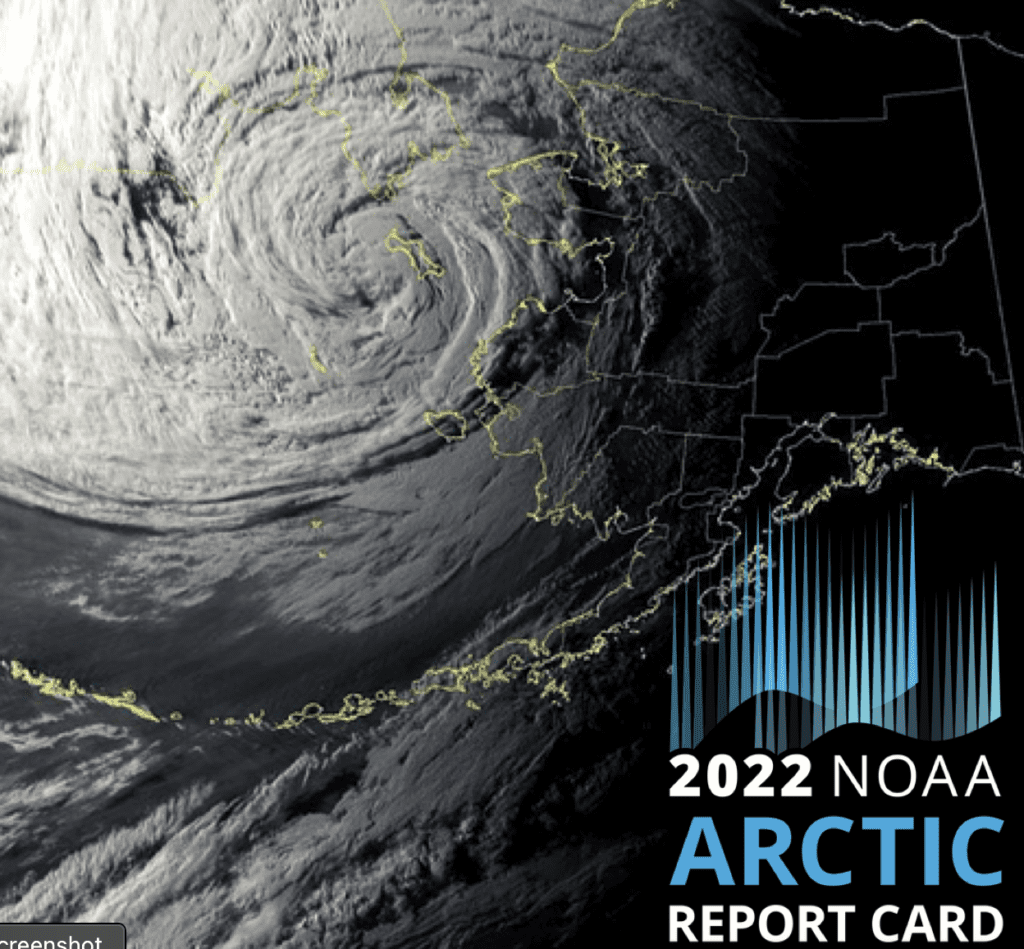Arctic Report Card 2022 by NOAA

Arctic Report Card issued annually since 2006 by National Oceanic and Atmospheric Administration (NOAA) to provide an update on environmental information and impact of climate change on Arctic. The warming arctic reveals shifting seasons, widespread disturbances and the value of diverse observations.
Key findings of Arctic Report Card 2022 by NOAA
- Surface air temperature : The average surface air temperature over the Arctic for the past year was the 6th warmest since 1990.
- Warm more than twice : The Arctic continues to warm more than twice as fast as the rest of the world.
- 2022 Arctic sea ice extent was similar to 2021 and well below the long-term average.
- Sea Surface Temperature (SST) : SSTs continued to show warming trend in most ice-free regions of the Arctic Ocean. SST in the Chukchi Sea were anomalously cool in 2022.
- Ocean primary productivity : Most regions of the Arctic continued to show increased ocean plankton blooms or ocean primary productivity over 2003-22, with the greatest increase in Eurasian Arctic and Barents Sea.
- Increased maritime ship traffic : Satellite records shows increased ship traffic in the Arctic as the sea ice decline. The most significant increases from Pacific Ocean through the Bearing Strait and Beaufort Sea.
- Terrestrial snow cover : It was unusually low over both the North America and Eurasian Arctic in Summer. But in winter, it was above average
- Arctic precipitation : A significant increase In precipitation since 1950s is now detectable across all seasons.
- Greenland Ice Sheet : It experienced its 25th consecutive year of ice loss.
- Tundra greening : It declined from the record high value of previous two year with high productivity in the most of the North American Arctic, but unusually low productivity in northeastern Siberia.
- Arctic Birds
- Despite avian influenza in North America in 2022, the population sizes of most Arctic geese remained high with stable trend.
- But, communities in the Northern Bearing and southern Chukchi Sea region reported higher-than-expected seabird die-offs for the sixth consecutive year.
Importance of Arctic
- Because of albedo effect, it helps keep the earth at an even temperature and keeps the world’s climate in balance.
- Arctic also helps circulate the world’s ocean currents, moving cold and warm water around the globe.
- Arctic is home to around four million people, including indigenous communities, spread across right countries which are Canada, Finland, Iceland, Norway, Russia, Sweden, Greenland and US.
- It is characterised s world’s climate change barometer.
- Melting of ice in Arctic, making region more accessible for economic exploitation.
India and Arctic
- India has observer status in Arctic Council. Arctic Council is an intergovernmental body that promotes research and facilitates cooperation among Arctic Countries on issues related to environmental protection and sustainable development of Arctic Region.
- India recently unveiled “India’s Arctic Policy, titled India and Arctic : Building partnership for sustainable development”
- Indian research centre “Himadri” was inaugurated in 2008.

No Comment! Be the first one.